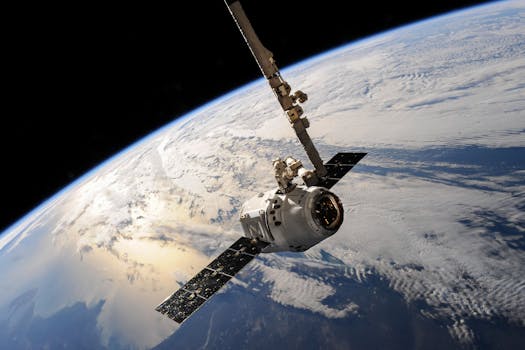
Introduction to GEO Satellites
GEO satellites, or Geostationary Orbit satellites, are a type of satellite that orbits the Earth at an altitude of approximately 35,786 kilometers above the equator. At this altitude, the satellite’s orbital period matches the Earth’s rotational period, allowing it to remain stationary relative to a fixed point on the Earth’s surface. This unique characteristic makes GEO satellites ideal for providing global connectivity, as they can maintain continuous communication with a specific region or country.
GEO satellites have been in use for several decades, with the first GEO satellite, Syncom 2, launched in 1963. Since then, the technology has evolved significantly, with modern GEO satellites offering higher bandwidth, improved signal quality, and increased longevity. Today, GEO satellites play a vital role in various applications, including telecommunications, navigation, remote sensing, and weather forecasting.
Applications of GEO Satellites
GEO satellites have a wide range of applications, including telecommunications, navigation, remote sensing, and weather forecasting. In telecommunications, GEO satellites are used to provide internet connectivity, television broadcasting, and mobile phone services to remote or underserved areas. They are also used for international communications, enabling global connectivity and facilitating international trade and commerce.
In navigation, GEO satellites are used to provide location information and timing signals, which are essential for various applications, including aviation, maritime, and land transportation. The Global Positioning System (GPS) is a prominent example of a navigation system that relies on GEO satellites to provide location information and timing signals.
Remote sensing is another significant application of GEO satellites, which involves collecting data about the Earth’s surface using sensors and cameras onboard the satellite. This data is used for various purposes, including environmental monitoring, crop monitoring, and disaster response.
Weather forecasting is also a critical application of GEO satellites, which provide images and data about the Earth’s atmosphere, oceans, and land surfaces. This data is used to predict weather patterns, track storms, and monitor climate change.
Benefits of GEO Satellites
GEO satellites offer several benefits, including global coverage, high bandwidth, and reliability. They can provide connectivity to remote or underserved areas, where traditional telecommunications infrastructure is limited or non-existent. GEO satellites are also relatively low-cost compared to other satellite technologies, making them an attractive option for many applications.
Another significant benefit of GEO satellites is their high bandwidth, which enables them to transmit large amounts of data quickly and efficiently. This makes them ideal for applications that require high-speed data transfer, such as video streaming and online gaming.
GEO satellites are also reliable and can operate for many years, with some satellites having a lifespan of up to 15 years or more. This makes them a cost-effective option for many applications, as they can provide continuous service over an extended period.
Conclusion
In conclusion, GEO satellites play a vital role in providing global connectivity, enabling communication, navigation, and remote sensing. Their unique characteristics, including their geostationary orbit and high bandwidth, make them ideal for various applications, including telecommunications, navigation, remote sensing, and weather forecasting. As technology continues to evolve, we can expect to see even more innovative applications of GEO satellites in the future.
The benefits of GEO satellites, including global coverage, high bandwidth, and reliability, make them an attractive option for many industries and applications. As the demand for global connectivity continues to grow, GEO satellites will remain a critical component of the global telecommunications infrastructure.




